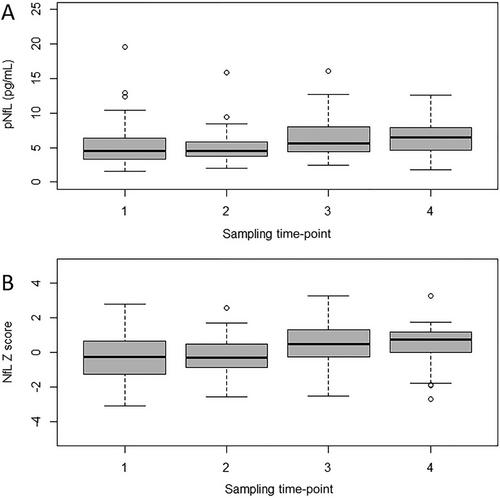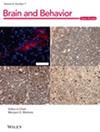Neurofilament Light Chain Is Associated With Acute Mountain Sickness
Abstract
Background
Neurological symptoms are common in acute mountain sickness (AMS); however, the extent of neuroaxonal damage remains unclear. Neurofilament light chain (NfL) is an established blood biomarker for neuroaxonal damage.
Objective
To investigate whether plasma (p) NfL levels increase after simulated altitude exposure, correlate with the occurrence of AMS, and might be mitigated by preacclimatization.
Methods
Healthy subjects were exposed to simulated high altitude (4500 m) by the use of a normobaric hypoxic chamber at the University of Innsbruck two times, that is, within Cycle 1 (C1) over 12 h, and within Cycle 2 (C2) for another 12 h but with a random assignment to prior acclimatization or sham acclimatization. Before each cycle (measurement [M] 1 and 3) and after each cycle (M2 and M4), clinical data (arterial oxygen saturation [SaO2], heart rate, and Lake Louise AMS score [LLS]) and plasma samples were collected. pNfL was measured using single-molecule array (Simoa) technique.
Results
pNfL levels did not significantly change within each study cycle, but increased over the total study period (M1: 4.57 [3.34–6.39], M2: 4.58 [3.74–6.0], M3: 5.64, and M4: 6.53 [4.65–7.92] pg/mL, p < 0.001). Subjects suffering from AMS during the study procedures showed higher pNfL levels at M4 (6.80 [6.19–8.13] vs. 5.75 [4.17–7.35], p = 0.048), a higher total pNfL increase (2.88 [1.21–3.48] vs. 0.91 [0.53–1.48], p = 0.022) compared to subjects without AMS. An effect of preacclimatization on pNfL levels could not be observed.
Conclusions
pNfL increases alongside exposure to simulated altitude and is associated with AMS.


 求助内容:
求助内容: 应助结果提醒方式:
应助结果提醒方式:


